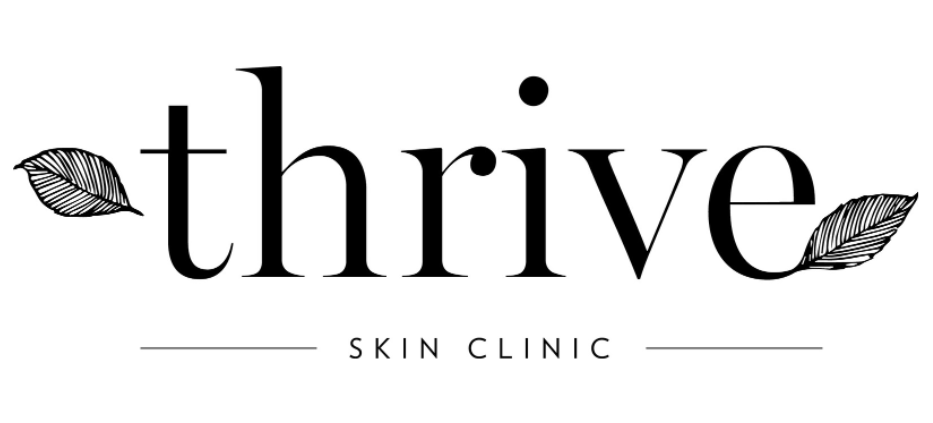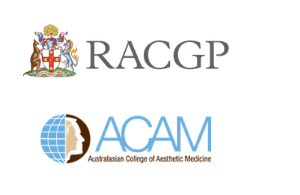How & Why Does the Face Age? And What Interventions Actually Work?
/We all hear about ‘ageing’, but what does it really mean?
Although most of us think of wrinkles as the main culprit of ageing, the reality is far more complex. The entire structure of the face, including skin, subcutaneous fat, muscles and bones change over time. Our cells do too, but that’s another story!
Before you read on – this information is not meant to shock or shame. If you want to improve your skin, or “look good for your age” (who doesn’t), it’s important to understand the science behind how we age. Once you (and your clinician), understands this, it allows us to tailor lifestyle advise, clinical interventions to the root cause.
What causes ageing skin?
Collagen Collagen is the mesh-like component that makes up around 75% of the skin. It gives skin structure and support and holds the landmarks of the face in position. With age, the number of collagen fibres decreases, and the ones that remain become less organised, weakening the tissues. This results in stretching of the skin, enlarged pores, wrinkles, and sagging jowls.
For women, collagen loss is accelerated in the years around menopause, when up to 30% of collagen is lost. This is compounded by the a tendency of skin to thin out and become more dry, due to oestrogen deficiency. This is why some women come to us feeling they have “aged overnight”, and why having regular collagen inducing treatment in perimenopause is so important.before menopause hits and throughout perimenopause is so important- bank the collagen while you have the oestrogen, and you’re future skin with thankyou!
Clinical interventions that increase collagen include: wearing sunscreen, using retinol, peels (especially in love with the Bio- Reeel), and collagen induction therapies such as laser and energy based devices.
I am a huge advocate of using heat based therapies (lasers and energy based devices) to stimulate collagen, because they stimulate a particular heat Shock protein pathway to improve your skin- this is way more effective than simple needling or peel as i some instances has exactly the same downtime. (In a perfect world, I use them both in one session!)
Low downtime laser facials are a great place to start if you want to stimulate collagen and work on your skin texture and tone. But you need to be consistent- start with one every 2- 4 weeks and then space it out to maintain your skin. Our clinics offer both the Laser Genesis (great for red, sensitive skin , pore size) and Spectar Q swicth laser (brightens skin, reduces pore size/congestion and pigmentation). Both these lasers are suitable for any skin type and can beused during pregnancy. High-Frequency Ultrasound using Ultraformer is another low downtime device to improve skin laxity and contour the skin. It’s the most well loved device in out clinic given it has no downtime at all!
If you are looking for more intense collagen stimulation, look at the Ultraclear laser. This is an ablative laser that can do anything from low downtime superficial laser peel (“3D Miracl”, with 1- 3 days of mild swelling and redness), to an intense ablative treatment for more significant concerns like deep lines and wrinkles, scarring pigmentation. It also has an amzing setting for facial laxity called “coring” (new to the laser world and why I love it!), which addresses skin laxity. This improves concerns such as lines and skin laxity around the eye , lip lines or neck sagging without surgery, and gives meaningful results. I usually combine Ultraformer and/or a Biostimulator with Laser Coring, and the resulrts are impressive! I am particularly excited about using this mode for patients after they have lost a lot of weight- it can be done anywhere on the body including the abdomen, arms and knees.
Last on the list are surgical modalities such as a facelift or neck lift. If you have significant skin redundancy, surgery is the gold standard treatment - it is the only modality that can remove excess skin. If you are wanting surgical results, or have severe concerns, please consider surgery, otherwise you might be wasting your money. Also, make sure you see a qualified and experienced plastic surgeon- I can let you know of trustworthy colleagues.
After years in this industry I can truely say that by using a scientific approach to ageing, being consistent and combining evidence based synergetic modalities, our clinic achieves natural-looking results that rival or even surpass surgical outcomes.
Fat All faces have fat compartments, and these areas of volume are vital to help support the skin and keep us looking healthy, particularly in the midsection (cheek and lower eyelid regions) and at the sides of the face (the temple and in front of the ear)
Unfortunately, as we age, or due to factors such as weight change, genes, medical illness, pregnancy and breastfeeding or medications, these fatty areas reduce in volume which leads to deflation, and “sunken” face. This leads to “tired-looking” eyes and contributes to jowl formation. Don’t ask me why we lose fat on the face and put it on in the middle- there is no justice! Catherine Deneuve famously quipped that “at a certain age, you have to choose between your face and your arse” …and to some degree this is true!
Clinical treatments that improve fat pad loss include judicious use of dermal fillers, injected Biostimulators, fat grafting, and plastic surgery. I’m a big fan of a specific Biostimulator product that replaces volume as well as improving the collagen in skin, especially for patients with a heavier skin or jawline. It’s known as the “Needle of Youth” in China due to it’s ability to refine skin tone, reduce laxity and improve volume concerns.
I also recommend that any procedure that addresses volume loss should begin with a laser or energy based device to improve the integrity of the skin FIRST. This will mean you need less volume (less expense) but also the results will much more natural and lifted. The skin holds everything in place- don’t ignore it! I was always taught by my aesthetic mentors to “lift then fill”) to minimise overfilling and bloating the face. And, despite what the filler companies may tell you, fillers do not lift… they fill.
Ligaments Skin is anchored to the facial skeleton via ligaments. As we age, these ligaments slacken and gravity pulls them down, causing the cheeks, and eyelids to descend ( “my face is falling down”), contributing to jowl formation and a sagging neck and jawline.
Currently, the best non surgical intervention to improve ligament laxity is HIFU (High Frequency Focused Ultrasound). This where the Ultraformer 3 is in its element, and the reason why we love it so much. The Ultraformer 3 has revolutionised the HIFU world with the introduction if the 4.5mm cartridge, that heats and tightens the aponeurosis and ligaments that sit above our above our facial muscles,
Although the gold standard treatment for laxity is a surgical facelift, for most people, this is not attainable due to the cost. However, the Ultraformer 3 is a viable alternative for mild to moderate skin laxity, especially when used early and regularly. Most plastics surgeons have a device like Ultraformer, which again is a testament to the validity of the technology, and many surgeons will advocate an annual treatment to maintain surgical results.
Bones Just like the bones in our hips and back, our facial bones shrink and become more porous with age.On the face, this is most notable around the eye socket, the base of the nose, and the chin. This contributes to the look of “tired eyes”, drops the tip of the nose, and pulls the mouth and chin downward.
There are several interventions to manage these issues- firstly start with a High G prime (strong) volumiser , and address structure. Have you have ever heard of the “Liquid FaceLift”?? - this is a technique we can use with injected volumising agents to improve structural support. I do use this technique and recommend a top up every few years. I also use neuromodulators (products that soften muscle movements) to reduce overactive muscles in the lower face. Make sure you see someone who knows what they are doing if they are treating the lower face as these are tricky areas.
Finallu, and most importantly, don’t forget your cells.
Metabolic Health
We are organisms composed of cells, and as we age, our cellular function declines. This is the underlying cause of ALL of the issues above, as well as the cause of chronic diseases such as cancer, inflammatory disorders, cardiovascular disease and frailty.
We now know that we CAN improve cellular function through our daily habits, such as prioritising sleep, eating a nutrient dense diet and avoiding processed food, exercising daily and connecting to other humans and yourself. Don’t just be busy all the time!
I am very passionate about addressing metabolic health, hormonal dysfunction and lifestyle choices with all my patients- freezing and filling won’t make you look younger! Metabolic function is the foundation of healthy skin and disease prevention, and should be your first priority if you want to “age well”.
If you want to talk or learn more about your skin and ageing, hormones or skin concerns, please book a consult with my team. We really are all experts in our field and we are extremely passionate about supporting our patients obtain real results, not just have a facial.
Having a consultation with an experienced practitioner is THE most important aspect of any treatment, as it will allow your clinician to formulate a bespoke plan based on your concerns, your clinical issues, and your budget.









